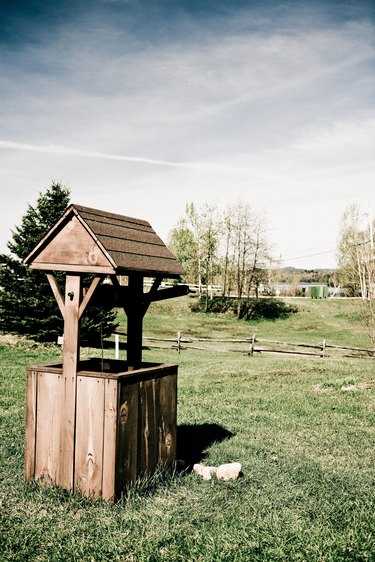Things You'll Need
Water pump valve turner
Air compressor
Wrench
Hair dryer
Electric heater
Heating pad

Well pumps are typically powered by electric motors, which create pressure and force fresh water upward from the well and into your water supply system. If you live in a location with seasonal weather changes, your shallow well pump may be subject to freezing. As temperatures drop, shallow well jet pumps that are located outside of the well altogether are subject to freezing and the damage it causes. The process of keeping your shallow well pump from freezing requires performing a few tasks in preparation for the weather to come.
Step 1
Empty your shallow well water pump so that no water at all remains in the intake or outflow lines, or the pump itself. If any water is present, it may freeze, resulting in broken water lines or a broken water pump. Turn off the water pump switch so that the pump ceases to automatically engage when water in the hold tank runs low. Water will drain back through the pump and out into the well where it came from, leaving the pump empty and protected from freezing.
Video of the Day
Step 2
Loosen the pump valve using the water pump valve turner. The valve holds water in the pump so that it is already primed when water is needed. By turning the valve to the open position, you allow any water being held inside the pump to flow back into the well, leaving the pump completely empty. Check your pump manufacturer's specifications to find the location of the valve.
Step 3
Open all the valves and faucets that are connected to the line running from your well. Use an air compressor to blow air through the water supply lines, from the pump end forward, so that all the water is removed and the lines are completely empty.
Step 4
Disconnect the pressure tank from the supply line and drain it completely. If the tank contains water, it may leak back into the well through the pump, where it can settle and freeze.
Step 5
Disconnect your offset line to ensure that no water can enter the pump from the well supply. The offset line is the water line that is submerged in the well and supplies the pump with water. Use your wrench to unscrew and remove the offset line from the pump intake valve. Leave the line disconnected throughout the winter.
Tip
The best way to thaw frozen pipes is to first turn off the supply of water to the frozen location. Open all the valves and faucets through which the pipe releases, then use a household heat source to warm the pipe slowly, until water begins to flow out normally. Once clear, close the faucets and valves, and open the water supply again. Check if the joints near the frozen pipe leak or if there is any visible damage at all. Suitable heat sources include hair dryers and electric heaters or heating pads. Deep water wells and pumps are usually safe from freezing since they are installed below the frost line.
Warning
Never allow children to play near your well. Small children are susceptible to drowning in even a few inches of water. Never use electrical devices in or near water.
Video of the Day
- This Old House: Winterizing a Cold-Weather Home
- Danny Lipford: How to Prevent Pipes From Freezing and Thaw Frozen Pipes
- State of Minnesota: Well Owner's Handbook
- Home Tips: Winterizing Your Irrigation System
- Hopkins Minnesota: Winterizing a Home
- Home Addition Plus: Winterizing a Vacation Home
- Well Water Connection: Well Planning Guide